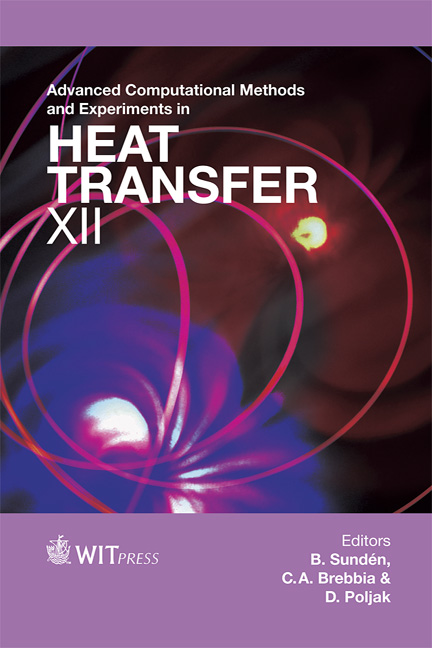The Influence Of Solar Radiation On The Distribution Of Temperatures In Historic Masonry
Price
Free (open access)
Transaction
Volume
75
Pages
12
Page Range
181 - 192
Published
2012
Size
1,857 kb
Paper DOI
10.2495/HT120161
Copyright
WIT Press
Author(s)
P. Beran
Abstract
One of the degradation processes in historic masonry is caused by cyclic thermal stress. Thus this paper is focused on the definition of the loading of historical objects. The component of this research was to detect the relations of wall maximal surface temperatures to its orientation to the cardinal points, material characteristics and speed of the wind around the surface. These relations were obtained by means of the 1-D numerical model of the wall. One surface of the wall was exposed to solar radiation and outside air, the other surface was exposed only to outside air. The simulations of the temperature response of the wall on climatic actions during July 2006 were used to define maximal surface temperatures. The maximal surface temperature of the wall significantly depends on its orientation to the cardinal points, declination of the surface from vertical, the speed of wind around the surface, coefficient of absorption of solar radiation, heat conduction of the wall and volume heat capacity. These results help to detect the facades of historic objects and historic materials which are highly stressed by temperature actions. The amount of money for renovation is limited, so this information could be used during planning of the renovation of the historical building. For example, if the failures on historic facades are caused by temperature stresses, the reduction of solar absorption coefficient by cleaning the dirty surfaces could be used only on the extremely loaded facades. Also the accurate selection of the repair material with respect to thermal expansion compatibility can reduce thermal stress. Keywords: temperature, solar radiation, material properties, numerical model, material compatibility, cultural heritage.
Keywords
temperature, solar radiation, material properties, numerical model, material compatibility, cultural heritage.





